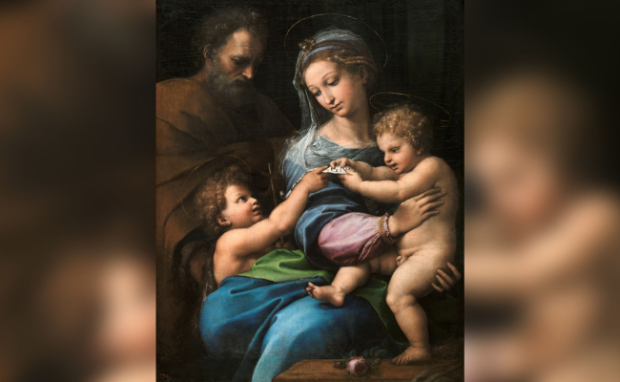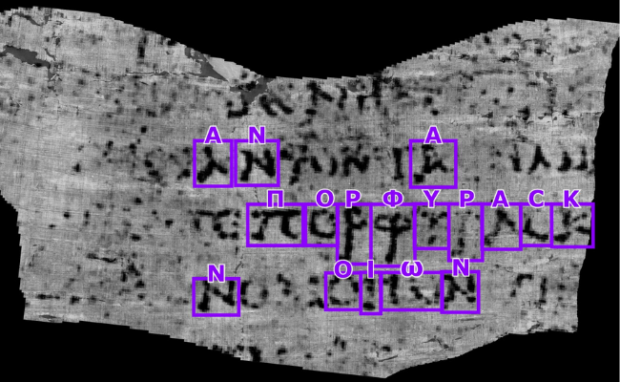Art AI reveals Raphael painting secret
Researchers from the United Kingdom and the United States developed an analysis algorithm to confirm whether Raphael made all his works. They trained the art AI program on the Renaissance artist’s works to achieve 98% accuracy. Surprisingly, it revealed that one of his paintings had work from one of his students!
Artificial intelligence is helping us uncover more of our history. Details previously thought to be lost to time can now be uncovered with cutting-edge machine learning tools. The recent discoveries related to Raphael’s masterpieces are only the latest examples. Soon, it may help your country’s archeologists offer more details about your heritage!
This article will explain how researchers used an art AI tool to analyze Raphael’s paintings. Later, I will share another way artificial intelligence helped us learn more about history.
How did the art AI work?

Raphael was an Italian Renaissance painter and architect who lived from 1483 to 1520. He was famous for his series of paintings called the “Madonnas,” which means “ladies” in Italian.
However, scholars have long debated the authenticity of the Madonna della Rosa or the Madonna of the Rose. That is why UK and US researchers created a custom analysis algorithm to settle the argument.
“Using deep feature analysis, we used pictures of authenticated Raphael paintings to train the computer to recognize his style to a very detailed degree, from the brushstrokes, the color palette, the shading, and every aspect of the work,” says mathematician and computer scientist Hassan Ugail from the University of Bradford in the UK.
“The computer sees far more deeply than the human eye, to the microscopic level,” he added. However, ScienceAlert says machine learning samples aren’t always available, especially for a sole artist’s work.
Artificial intelligence programs need samples to detect content properly. That is why the team modified a pre-trained architecture from Microsoft called ResNet50.
You may also like: Scientists create paint that produces oxygen
They also paired it with a traditional machine learning technique called Support Vector Machine. This method is usually 98% accurate when scanning whole pictures, but the team also asked it to analyze individual faces.
The researchers said scholars thought St. Joseph’s face in the Madonna of the Rose was of lesser quality than others in the image. “When we tested the della Rosa as a whole, the results were not conclusive,” says Ugail.
“So, then we tested the individual parts and while the rest of the picture was confirmed as Raphael, Joseph’s face came up as most likely not Raphael,” he added. ScienceAlert also said Giulio Romano, one of Raphael’s students, might have been responsible for the fourth face.
Other AI applications

Experts discovered charred scrolls under the ruins devastated by Mt. Vesuvius’ eruption in AD 79. “Some 95% of the material from the classical period, so we just don’t have anything,” said Professor Brent Seales from the University of Kentucky’s EduceLab.
That is why he and other experts were determined to uncover information from the burnt scroll. Later, they detected ink, catching the attention of tech entrepreneurs Nat Friedman and Danial Gross.
In March 2023, they started the Vesuvius Challenge, named after the volcano that erupted during the scroll’s early years. They offered a $700,000 Grand Prize and many smaller prizes for developing open-source programs and techniques.
In August 2023, ex-JPL startup founder and polymath Casey Handmer wrote a blog explaining his discovery of a “crackle pattern” resembling ink. Moreover, he found a letter inside the unopened record.
Later, college student Luke Farritor saw Handmer’s crackle pattern sparking Discord conversations. In response, he spent late nights training a machine learning model on the pattern.
Finding new crackles improved the model, triggering a cycle of discovery and refinement. Eventually, the AI scroll algorithm found crackles invisible to the naked eye.
You may also like: AI music study predicts hit songs
Then, he submitted his findings to the Vesuvius Challenge for the First Letters Prize, which required contestants to find at least 10 letters in a 4-square-centimeter area.
As mentioned, Farritor found the word “porphyras,” the Greek word for “purple.” Professor Seales claimed, “This word is our first dive into an unopened ancient book, evocative of royalty, wealth, and even mockery.”
“What this particular scroll is discussing is still unknown, but I believe it will soon be revealed. An old, new story that starts for us with ‘purple’ is an incredible place to be,” he added.
Conclusion
Researchers created an art AI program to analyze the Renaissance artist Raphael’s paintings. Surprisingly, they discovered that the Madonna of the Rose may have had other hands work on it.
Some speculate that one of his students drew one of the faces, but we haven’t confirmed that yet at the time of writing. Computer scientist Hassan Ugail said, “This sort of software can be used as one tool to assist in the process.”
Learn more about this art AI tool by reading its Heritage Science webpage. Moreover, check out more digital tips and trends at Inquirer Tech.